Ductile Iron Pipe Buyer’s Guide: Specs, Prices & Picks
2025-04-23 16:33:44 hits:0
Ductile Iron Pipe Buyer’s Guide: Specs, Prices & Picks
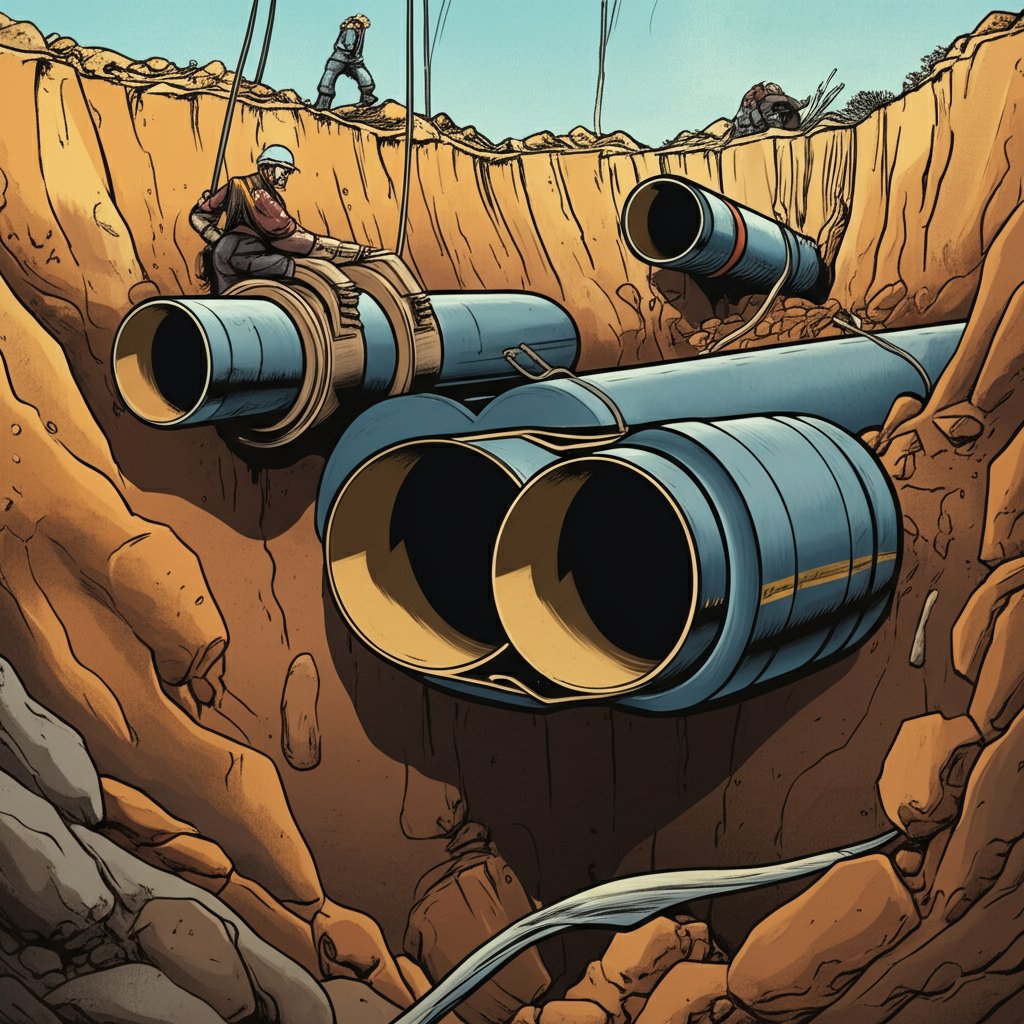
Introduction to Ductile Iron Pipe: What Makes It the Backbone of Modern Infrastructure?
When you turn on the tap or walk past a construction site, you might not think about the pipes beneath your feet. Yet, the choice of piping material can determine the reliability and longevity of entire water or sewer systems. That’s where ductile iron pipe (DIP) stands out—especially for critical applications demanding strength, resilience, and long-term value.
So, what exactly is ductile iron pipe? Imagine cast iron, but with a crucial twist. Traditional cast iron is strong under compression but brittle when bent or twisted. Ductile iron, on the other hand, features a unique spheroidal (nodular) graphite microstructure. Instead of flakes, the graphite forms tiny, rounded nodules within the iron matrix. Sounds technical? Here’s why it matters: this structure allows the pipe to flex and absorb shocks, making it far less likely to crack under stress or shifting ground conditions. You’ll notice this flexibility translates into higher strength, greater impact resistance, and impressive durability—even in demanding environments.
For engineers, utilities, and buyers, understanding ductile iron pipe specifications is about more than just material science. It’s about making informed decisions that affect performance, cost, and maintenance over decades of service. Whether you’re planning a municipal water main, a sewer upgrade, or an industrial installation, the right DIP can be a game changer.
This guide is designed to help you cut through the complexity. Here’s what you’ll gain:
A clear explanation of how DIP’s microstructure shapes its performance
Key metrics and standards that define quality and suitability
How to compare DIP with other pipe materials for your application
Essential factors influencing pricing and sourcing
Tips for selecting the right pipe specifications and suppliers
Ready to dive in? Let’s explore why ductile iron pipe remains the gold standard for robust, long-lasting piping systems.
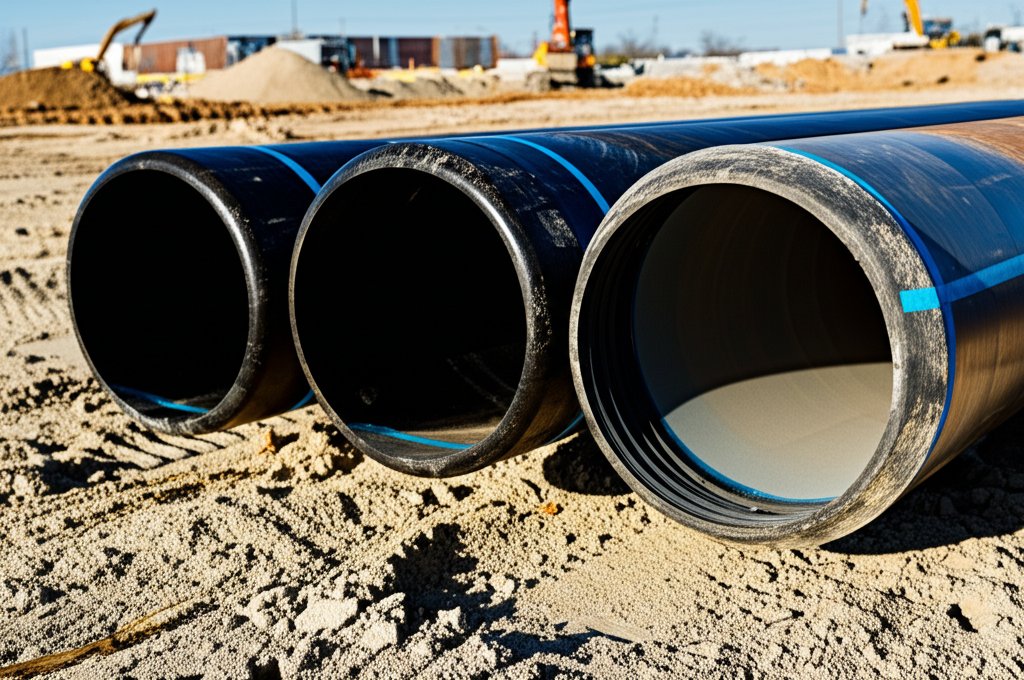
Understanding the Core Strengths of Ductile Iron Pipe: Why Performance Sets It Apart
Ever wondered why so many engineers and municipalities insist on ductile iron pipe for their most critical infrastructure projects? Imagine a scenario where pipes must endure decades of ground movement, high water pressure, and fluctuating temperatures—wouldn’t you want a material that’s proven to last?
How Ductile Iron Pipe Outperforms Other Materials
When you compare ductile iron pipe strength to alternatives like PVC, steel, or even older cast iron, the differences are striking. Here’s what sets DIP apart:
Exceptional Tensile Strength: Ductile iron pipe delivers more than nine times the tensile strength of PVC pipe. This means it can handle much greater pulling and stretching forces without failing—critical for installations where ground shifts or heavy loads are common.
Superior Impact and Burst Resistance: DIP boasts over 13 times the impact strength and four times the burst strength of PVC. This resilience translates to fewer failures during installation and throughout its service life.
Pressure Ratings That Last: Unlike some materials whose strength diminishes over time, ductile iron’s pressure tolerance remains stable for decades. PVC, by contrast, becomes more prone to failure under prolonged or increased stress.
Seismic and Ground Movement Resilience: Thanks to its nodular graphite microstructure, DIP can flex and absorb shocks from earthquakes or shifting soils, reducing the risk of catastrophic breaks that can occur with more brittle pipes.
Long Service Life: With proper installation and corrosion protection, ductile iron pipe systems have a proven track record of lasting 100 years or more, far outpacing the typical lifespan of PVC or steel alternatives (AWWA).
Temperature and Environmental Stability: DIP is unaffected by extreme cold or heat, maintaining its strength and flexibility across a wide range of conditions. PVC, on the other hand, becomes brittle in cold weather and softens in heat, increasing the risk of failure.
Ease of Installation and Maintenance: Direct tapping, repairs, and leak detection are all simpler and safer with ductile iron compared to PVC, which is more susceptible to cracking and harder to locate underground.
Ductile Iron Pipe vs. Cast Iron Pipe: The Evolution of Strength
If you’re familiar with traditional cast iron, you might ask, "How does ductile iron pipe compare?" The answer lies in its microstructure—while cast iron is strong under compression, it’s brittle when bent or impacted. Ductile iron, by contrast, bends rather than breaks, making it vastly more reliable for today’s demanding applications.
"Ductile iron pipe’s strength, durability, and resistance to corrosion have made it an icon for reliability in water and wastewater systems." — AWWA Opflow
When you’re weighing ductile iron pipe vs cast iron pipe or considering alternatives like PVC and steel, it’s clear that DIP delivers unmatched performance where it matters most—strength, longevity, and peace of mind. In the next section, we’ll break down the technical standards and physical properties that help you specify the right pipe for your project.
Exploring Key Technical Standards and Properties: Decoding Ductile Iron Pipe Specifications
When you’re specifying pipes for a major project, how do you ensure reliability, compatibility, and safety? The answer lies in understanding the ductile iron pipe standards that govern everything from wall thickness to pressure ratings. Sounds complex? Let’s break it down so you can make confident decisions—whether you’re an engineer, a project manager, or a procurement specialist.
Why Global Standards Matter
Imagine two pipes that look identical, but only one holds up under pressure or fits your system’s requirements. That’s why international standards—like AWWA C151 (North America), ISO 2531 (global), and EN 545 (Europe)—exist. They set clear benchmarks for:
Wall thickness
Pressure class (the maximum pressure the pipe can safely handle)
Lining and coating options (for corrosion resistance and water quality)
Dimensions and tolerances (ensuring fit with standard fittings and joints)
Adhering to these standards guarantees that pipes from different manufacturers will perform as expected and integrate seamlessly with your system. For engineers, this means predictable ductile iron pipe weight, strength, and lifespan. For procurement, it means easier sourcing and compliance with regulations.
Physical Metrics: How Standards Translate to Real-World Specs
Let’s make this practical. Each standard defines classes or series that dictate minimum wall thickness, pressure ratings, and dimensions. For example:
K Class (ISO 2531/EN 545): Used widely outside North America. Classes like K7, K8, K9, and K12 set wall thickness and pressure resistance. Higher K-numbers mean thicker walls and greater pressure tolerance (Yasmin Trading).
C Class (ISO 2531): Focuses on working pressure. C20, C25, C30, and C40 are common, with higher numbers for higher pressures.
AWWA C151: Common in North America, defines pressure classes (PC 150, PC 200, etc.) and provides detailed charts for wall thickness and weight by diameter (Taylor Walraven).
These standards also specify lining options, like cement-mortar for water quality and corrosion protection, or bituminous coatings for external environments.
Comparative Table: Nominal Diameters, Wall Thickness, and Weight
To give you a sense of how these metrics stack up, here’s a sample from AWWA C151 for Pressure Class 53 pipes—a common choice for municipal water mains:
| Nominal Diameter (inches) | Outside Diameter (inches) | Minimum Wall Thickness (inches) | Weight per Foot (lb/ft) |
|---|---|---|---|
| 6 | 6.90 | 0.34 | 22.0 |
| 8 | 9.05 | 0.36 | 31.0 |
| 12 | 13.20 | 0.40 | 50.7 |
| 24 | 25.80 | 0.47 | 119.2 |
| 36 | 38.30 | 0.58 | 219.5 |
These values help you calculate the total ductile iron pipe weight for shipping and installation, as well as assess structural support needs. For a more detailed breakdown or project-specific calculations, always consult the full standard or your supplier’s technical datasheet.
Why Standards Are Essential for Your Project’s Success
When you follow recognized ductile iron pipe standards, you’re not just ticking a box. You’re ensuring:
Consistent quality and performance—pipes will meet or exceed required strength and pressure ratings
Interchangeability—fittings, joints, and accessories will fit and function as intended
Regulatory compliance—many public projects require adherence to AWWA, ISO, or EN standards
Long-term reliability—minimizing the risk of leaks, failures, or costly repairs
In short, understanding these technical standards is the foundation for successful specification, procurement, and long-term operation. Next, we’ll go inside the production process to see how these standards are brought to life in the plant.
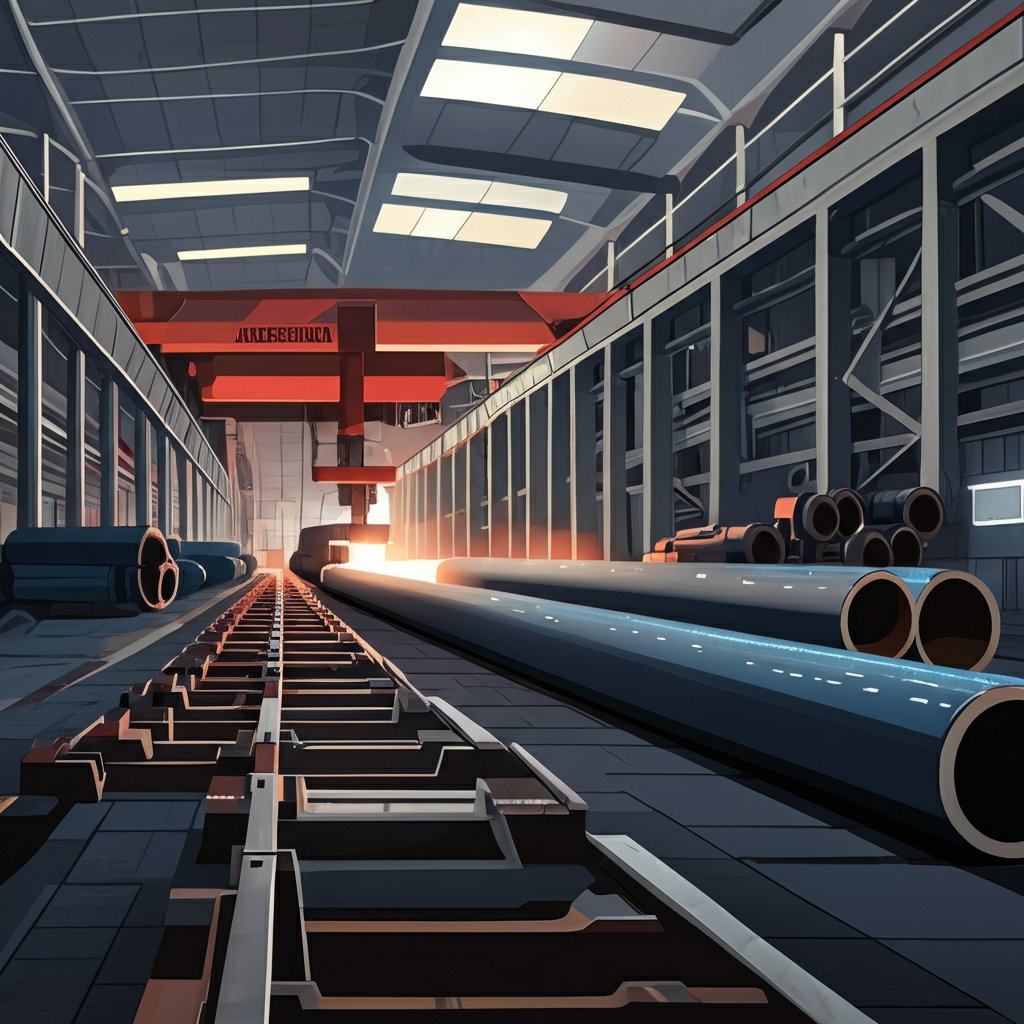
Inside the Modern Ductile Iron Pipe Production Process: From Scrap to Strong Infrastructure
Ever wondered what goes on inside a ductile iron pipe plant? The journey from scrap metal to a finished pipe is a fascinating blend of engineering, chemistry, and rigorous quality control. Let’s walk through the ductile iron pipe manufacturing process—step by step—so you can see how every pipe is built to last and meet strict standards.
Raw Material Preparation: Recycling Meets Precision
It all starts with recycled metals. Picture old cars, demolished building steel, and other iron-rich scrap being sorted, cleaned, and prepared for melting. In fact, up to 95% of the material in a typical ductile iron pipe comes from recycled sources, making the process both sustainable and resource-efficient (McWane Ductile).
Scrap iron and steel are collected and shredded for consistency.
Non-ferrous metals and contaminants are removed to ensure quality.
Precise amounts of magnesium and other additives are prepared for later steps, crucial for creating the nodular graphite structure that gives ductile iron its flexibility.
Melting and Centrifugal Casting: Shaping the Pipe
The next stop is the blast furnace, where scrap is melted at high temperatures. Here’s where the magic—and science—happens:
The molten iron is transferred to a centrifugal casting machine. Imagine a spinning mold: as the iron pours in, centrifugal force pushes it evenly against the mold walls, forming a perfectly round, dense pipe.
Before casting, magnesium is added to the molten iron. This step is vital for transforming ordinary gray iron into tough, ductile iron with its signature spheroidal graphite microstructure (New Engineering Practice).
As the pipe solidifies, a water-cooling system ensures rapid, uniform cooling, which helps maintain the desired structure and dimensions.
Each pipe is extracted to standard lengths—typically 6 meters—ready for the next phase.
Annealing: Turning Brittle Iron into Ductile Strength
You might think the pipe is finished after casting, but it’s still too brittle for real-world use. That’s where annealing comes in:
Pipes are reheated in a gas-filled annealing furnace to about 950°C.
This heat treatment changes the internal grain structure, making the pipe strong yet flexible—ideal for underground installations that must withstand shifting soils and heavy loads.
After annealing, pipes are cooled gradually to lock in the desired properties.
Quality Assurance: Testing and Inspection
Quality control isn’t just a final check—it’s woven throughout the process. Here’s how every pipe is tested before it leaves the plant:
Hydrostatic testing: Each pipe is filled with water and pressurized well above its rated working pressure to confirm there are no leaks or weaknesses.
Dimensional checks: Wall thickness, diameter, and length are measured to ensure compliance with standards like AWWA C151 or EN 545.
Visual and physical inspections: Surface finish, straightness, and bell/spigot integrity are all assessed.
Cement-Mortar Lining and Protective Coatings
To ensure long service life and water quality, each pipe receives protective linings and coatings:
Internal lining: A layer of cement-mortar is sprayed inside the pipe, then spun to achieve an even, smooth finish. This lining protects against corrosion and ensures clean water delivery.
External coating: Depending on the application, pipes may be coated with zinc, bitumen, or polyethylene for added protection against soil and environmental factors.
Marking and bundling: Pipes are painted with depth guide stripes and bundled for safe shipment.
Continuous Improvement and Sustainability
Modern ductile iron pipe plants focus not only on quality but also on environmental responsibility. By maximizing recycled content and rigorously managing emissions, manufacturers support both infrastructure resilience and sustainability goals.
Now that you’ve seen how each pipe is made—from recycled scrap to finished product—you’ll appreciate how every stage of the ductile iron pipe manufacturing process contributes to its legendary reputation for strength and reliability. Next, we’ll explore how different joint types and connection methods ensure your piping system is as robust as the pipe itself.
Choosing the Right Joint Restraints and Connection Methods: A Practical Guide for Every Project
When you’re planning a water main, sewer, or industrial pipeline, the way you connect each pipe section can make or break your system’s reliability. Sounds complex? It doesn’t have to be. The secret lies in picking the right joint type—whether that’s a push-on, mechanical, flanged, or restrained joint. Each has its own strengths, limitations, and ideal applications. Let’s break them down so you can match the connection to your project’s needs with confidence.
Understanding the Main Joint Types
Push-On Joints: The most common and easiest to install, especially for underground water and sewer lines. They use a rubber gasket to form a watertight seal—no bolts, no fuss. After assembly, you can achieve up to 5° of deflection, which helps the pipe curve gently around obstacles or along roadways. Push-on joints are non-restrained by default, so if you need to resist thrust forces, you’ll need to add external restraints or use a restrained version (DIPRA).
Mechanical Joints: Think of these as the workhorses for fittings, valves, and sections where you might need to disassemble later. They use a bolted gland to compress a gasket, creating a tight seal. With a mechanical joint restraint for ductile iron pipe, you can convert them into restrained joints, eliminating the need for bulky thrust blocks. Mechanical joints offer up to 5° deflection on smaller sizes, but less on larger diameters (McWane Ductile).
Flanged Joints: When you need a rigid, leak-proof connection for above-ground systems—think pump stations or treatment plants—flanged ductile iron pipe is your go-to. These joints are bolted together with a gasket in between. They don’t allow deflection, so they’re not suited for underground use where ground movement is a risk (DIPRA).
Restrained Joints: Need to resist pipe movement from internal pressure or changes in direction? Restrained joints come in both push-on and mechanical varieties, using special gaskets, wedges, or locking rings to hold everything in place. They’re essential for high-pressure, directional changes, or areas where thrust blocks are impractical.
Comparing Joint Types: Deflection, Pressure, and Applications
| Joint Type | Allowable Deflection | Pressure Limit (psi) | Typical Applications |
|---|---|---|---|
| Push-On | Up to 5° (varies by size) | Up to 350 | Underground water, sewer, flexible alignments |
| Mechanical | Up to 5° (smaller sizes) | Up to 350 | Fittings, valves, areas needing disassembly |
| Flanged | None (rigid) | 250–350 | Above-ground, pump stations, plants |
| Restrained (Push-On or Mechanical) | Up to 5° (varies by design/size) | Up to 350 (varies by size) | High-pressure, directional changes, areas without thrust blocks |
Choosing the Right Connection: What Should You Consider?
So, how do you decide which joint is best? Here are a few practical questions to guide your selection:
Is the pipeline above or below ground? Use push-on or mechanical joints for underground; flanged for above-ground.
Will there be significant ground movement or curves? Push-on and restrained joints allow for deflection and flexibility.
Is thrust restraint needed? Opt for a mechanical joint restraint for ductile iron pipe or a proprietary restrained joint if you want to avoid thrust blocks.
Do you need to disassemble or modify the line later? Mechanical joints are easier to take apart and reassemble.
Are you dealing with high-pressure or critical connections? Restrained or flanged ductile iron pipe is often the safest bet.
Specialty Joints and Advanced Options
Ball and Socket Joints: Ideal for river crossings and subaqueous installations—these joints offer up to 15° deflection and resist joint separation under tough conditions.
Grooved/Shouldered Joints: Used mainly in above-ground applications, these allow for quick assembly/disassembly and can be supplied as either flexible or rigid, depending on project needs.
Seismic Joints: For areas prone to earthquakes or ground shifts, seismic couplings are engineered to absorb movement and prevent pipe separation.
Imagine a complex city water main: you might use push-on joints for long, straight runs, mechanical joints at valve connections, restrained joints at bends or tees, and flanged ductile iron pipe in the pump house. The right combination ensures your system is leak-free, durable, and easy to maintain.
Now that you’ve got a clear picture of how joint types impact both installation and long-term performance, you’re ready to factor in pricing—because the joint method you choose can also affect your project’s bottom line. Let’s look at how cost drivers come into play in the next section.
Managing Pricing Factors and Cost Analysis: What Drives Ductile Iron Pipe Prices?
Ever looked at a ductile iron pipe price list and wondered why the numbers vary so much from one project or supplier to the next? If you’re planning a major water main, sewer, or industrial upgrade, understanding what’s behind these costs can help you budget smarter and negotiate better. Let’s demystify the key drivers of ductile iron pipe prices so you can make informed, value-focused decisions.
What Factors Influence Ductile Iron Pipe Prices?
Imagine you’re building a pipeline—what determines whether you pay $20 or $200 per foot? Here’s a breakdown of the major cost drivers you’ll see reflected in any ductile iron pipe price list:
Diameter and Length: Larger diameter pipes require more iron, more lining material, and heavier-duty handling. For example, recent municipal price sheets show a 4" Class 52 DIP at $22.71/ft, while a 48" pipe of the same class can exceed $342/ft (Fairfax Water).
Pressure Class: Higher pressure ratings mean thicker walls and more raw material, driving up both weight and cost. Restrained joint pipes, designed for high-pressure or directional changes, are even pricier—expect a 24" restrained joint DIP to cost $120/ft versus $95.98/ft for a standard joint.
Coatings and Linings: Internal cement-mortar linings and external zinc, epoxy, or polyethylene coatings protect against corrosion but also add to the price. Some coatings are required by spec, while others are selected for extra durability in aggressive soils or water conditions.
Freight and Logistics: Shipping heavy DIP over long distances can be a significant percentage of your total cost, especially for large-diameter or long-haul projects. Proximity to the manufacturing plant and order consolidation can help reduce this expense.
Order Size and Customization: Bulk orders typically unlock better unit pricing, while small or highly customized runs (special linings, non-standard lengths, or unique fittings) may carry surcharges.
Accessories and Fittings: Don’t overlook the cost of ductile iron pipe fittings—elbows, tees, flanges, and gaskets. For example, a 12" restraining gasket might run $69.70 each, while a 24" version can top $313.45 (Fairfax Water). Always factor these into your total installed cost.
Market and Material Fluctuations: Like steel and other metals, ductile iron prices can shift based on global commodity markets, energy costs, and supply chain disruptions. Most OEMs note that published prices are subject to change without notice.
Sample Ductile Iron Pipe Price List
| Pipe Size (inches) | Class | Coating/Lining | Unit Price (per ft) |
|---|---|---|---|
| 4 | 52 | Zinc | $22.71 |
| 12 | 52 | Zinc | $40.31 |
| 24 | 52 | Zinc | $95.98 |
| 24 | 52 | Zinc, Restrained Joint | $120.01 |
| 48 | 52 | Zinc | $342.26 |
Note: Prices are for reference only and can change based on region, volume, and market trends. Always request a current quote for your project.
How to Get the Best Value on Ductile Iron Pipe
Work with suppliers who offer transparent, up-to-date price lists and are willing to lock in pricing for large or time-sensitive projects.
Ask about bundled pricing for pipe and fittings—sometimes you’ll save by sourcing both from the same manufacturer.
Factor in long-term savings from higher-quality linings or coatings, which can reduce maintenance and replacement costs over decades of service.
Consider freight and logistics early in planning—ordering full truckloads or rail shipments can significantly cut per-foot delivery costs.
For the most accurate and competitive ductile iron pipe prices, be sure to compare multiple suppliers and request a detailed ductile iron pipe fittings price list tailored to your project. For real-time quotes, see TIEGU’s current DIP offers—their team can help you navigate specs, coatings, and logistics for the best total value.
Understanding these pricing factors not only helps you control costs but also ensures you’re investing in the right pipe for your application. Next, we’ll explore how to evaluate suppliers and distributors to make sure your investment delivers long-term reliability and support.
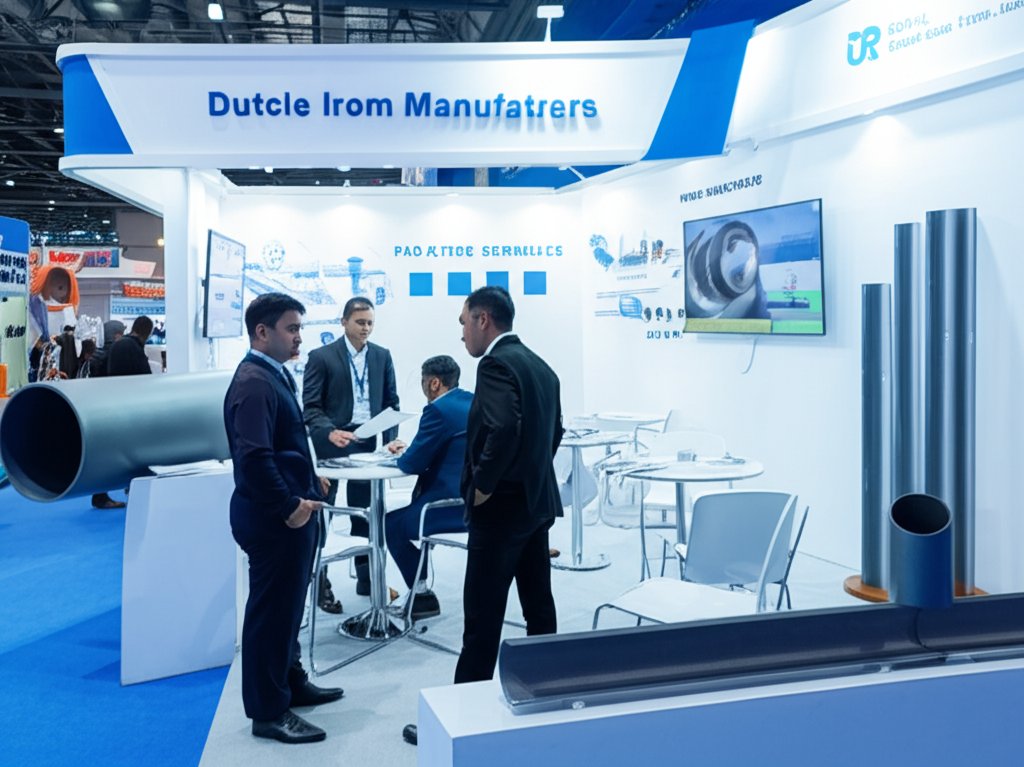
Comparing Distributors and Manufacturer Options: How to Choose the Right Ductile Iron Pipe Partner
When you’re ready to source ductile iron pipe for your next project, the question isn’t just “who has the best price?”—it’s “which ductile iron pipe manufacturers and ductile iron pipe distributors will deliver the quality, support, and reliability your project demands?” Imagine the difference between a smooth project and costly delays: it often comes down to your choice of supplier.
What Should You Look for in a Ductile Iron Pipe Supplier?
Sounds complex? Here’s a straightforward checklist to help you vet potential partners and avoid common pitfalls:
ISO Certification and Quality Standards: Always confirm that the manufacturer holds ISO 9001 or equivalent certifications. This signals rigorous quality management and compliance with international standards, ensuring each pipe meets or exceeds project requirements (Plumberstar).
Geographic Proximity: Closer manufacturers or distributors mean lower freight costs, faster delivery, and easier coordination—especially for large or urgent orders.
Inventory Depth and Flexibility: Can the supplier provide the full range of sizes, pressure classes, and joint types you need? Deep inventory translates into shorter lead times and better project flexibility.
After-Sales Support: Look for suppliers that offer technical assistance, installation guidance, and responsive customer service. Some even provide onsite support or extended warranties, which can be invaluable for complex projects.
Track Record and References: Ask about completed projects similar to yours, and request references. A reputable supplier should have a portfolio of successful installations and satisfied clients.
Top Global Ductile Iron Pipe Manufacturers and Distributors
To help you get started, here’s a list of respected names in the industry—each recognized for quality, innovation, and service. This is not an exhaustive list, but it highlights leaders you’ll encounter in the global market:
TIEGU – A one-stop provider for engineers and contractors worldwide, TIEGU stands out for its comprehensive casting solutions, advanced manufacturing technology, and rapid delivery. Their broad size range (DN80–DN3000), multiple joint types, and tailored coatings/linings make them a go-to for projects demanding flexibility and reliability. TIEGU’s ISO-certified processes and global partnerships ensure consistent quality and strong after-sales support.
Jindal SAW – As a leading ductile iron pipe manufacturer in India, Jindal offers high-strength, corrosion-resistant pipes for water and wastewater applications. Their products comply with major standards like ISO 2531 and EN 545, and they’re well-known for export capabilities (Tubos India).
U.S. Pipe – A major North American producer, U.S. Pipe is recognized for innovation, robust technical support, and a reputation for quality in municipal water infrastructure.
Saint-Gobain PAM – With a global footprint and a legacy of innovation, Saint-Gobain PAM offers a wide range of ductile iron pipe and fittings, serving both municipal and industrial markets.
Electrosteel Castings – A global supplier with a strong presence in Europe, the Middle East, and Asia, Electrosteel is known for meeting stringent international standards and offering extensive technical support (Plumberstar).
McWane Ductile – Renowned for its wide distribution network and deep inventory, McWane Ductile delivers high-quality pipes and fittings across North America, with robust after-sales service.
Of course, there are many more regional and specialized ductile iron pipe distributors—from Plumberstar in Europe to APS Pipes in Romania—so always compare local options as well.
Tips for a Smooth Sourcing Experience
Request technical datasheets and ISO certificates up front to verify compliance.
Ask about lead times for both standard and custom orders—inventory depth matters!
Clarify after-sales support: Does the supplier offer on-site training, troubleshooting, or extended warranties?
Consider proximity and logistics—local distributors may offer faster delivery and easier coordination, but global manufacturers often provide more options and competitive pricing.
By carefully vetting your ductile iron pipe manufacturers and distributors, you’ll set your project up for long-term success. Next, we’ll show you how to match specific pipe specs to your unique project requirements, ensuring every detail aligns from sourcing to installation.
Matching Pipe Specifications to Project Requirements: A Step-by-Step Selection Guide
When you’re faced with a maze of pipe classes, thicknesses, and lining options, how do you ensure your choice fits your project’s needs? Imagine specifying a water main for a city, a sewer outfall, or an industrial slurry line—each has its own demands. Sounds complex? Let’s break it down with a clear, practical workflow you can use for any application.
Step-by-Step Workflow: How to Match DIP Specs to Your Project
Identify Your Application: Is it municipal water, wastewater/sewer, or an industrial process (like slurry, chemicals, or fire protection)?
Determine Required Pressure Class: Higher-pressure systems (like transmission mains or industrial lines) call for higher pressure classes (K9, K12, C30, C40, or AWWA PC 250+). Lower-pressure systems (gravity sewers, irrigation) may use K7, C20, or similar (Yasmin Trading).
Specify Lining and Coating: For potable water, cement-mortar lining is standard. For aggressive environments (industrial waste, acidic soils), consider specialty linings such as ceramic epoxy or glass, and external polyethylene encasement.
Choose the Right Joint Type: Underground water/sewer lines often use push-on or mechanical joints; above-ground or plant piping may require flanged joints. Restrained joints are essential at bends, valves, or where thrust blocks aren’t practical.
Check Pipe Thickness and Weight: Use manufacturer tables or a ductile iron pipe weight calculator to confirm that your selected pipe class meets load, handling, and installation needs.
Review Standards Compliance: Ensure your selection complies with local or project-required standards: AWWA C151, ISO 2531, or EN 545.
Consult with Your Supplier: Confirm availability, lead time, and any custom requirements (special lengths, coatings, or fittings).
Application-to-Spec Mapping Table
| Application | Recommended Pressure Class | Lining/Coating | Typical Joint Type | Reference for Thickness/Weight |
|---|---|---|---|---|
| Municipal Water Main | K9 / C30 / PC 250+ | Cement-mortar, optional PE encasement | Push-on, restrained at bends | Manufacturer chart or ductile iron pipe weight calculator |
| Gravity Sewer | K8 / C20 / PC 150–200 | Cement-mortar, optional ceramic/epoxy | Push-on, mechanical at fittings | Manufacturer chart |
| Industrial Slurry/Process | K12 / C40 / PC 350 | Glass or ceramic epoxy, PE encasement | Restrained, flanged for above ground | Manufacturer chart |
| Fire Protection Main | K9 / PC 250–300 | Cement-mortar, zinc or bitumen exterior | Push-on, mechanical at hydrants | Manufacturer chart |
Why Thickness and Weight Matter in Selection
Picture this: you’re planning a bridge crossing or a deep trench installation. Underestimating ductile iron pipe thickness can lead to structural failures, while misjudging weight could mean inadequate lifting equipment or unsafe job sites. Always use up-to-date manufacturer data or a ductile iron pipe weight calculator to verify your specs, factoring in not just the pipe but also linings, coatings, and the weight of contained fluid.
By following this workflow, you’ll match the right pipe to every project—balancing cost, safety, and long-term performance. Next, we’ll look at real-world applications and important limitations, so you can make decisions with confidence and foresight.
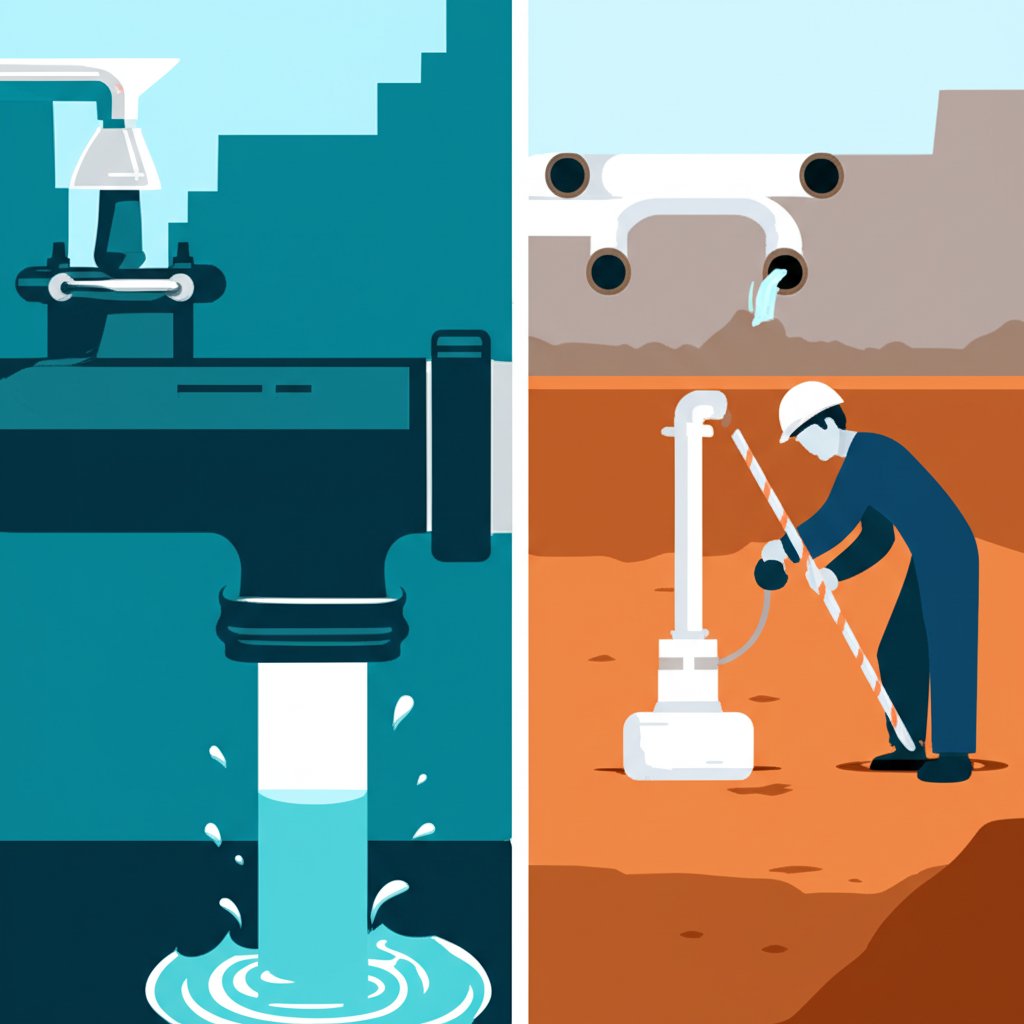
Real-World Applications and Important Limitations
When you picture a city’s lifeline, what comes to mind? Clean water rushing to homes, wastewater safely whisked away, and fire hydrants ready at a moment’s notice. Behind all of this, there’s a good chance you’ll find ductile iron pipe—but is it always the best fit? Let’s explore the core uses of this material and the practical realities every buyer should weigh before making a decision.
Where Ductile Iron Pipe Delivers: Key Applications
Imagine the range of environments a pipe must survive: high-pressure water mains, corrosive sewers, or the sudden rush of water in a fire emergency. Ductile iron’s unique blend of strength, flexibility, and longevity makes it a top choice for:
Water Transmission and Distribution: Ductile iron water pipe is the backbone of municipal water systems, reliably carrying potable water from treatment plants to neighborhoods and businesses. Its durability ensures minimal water loss and consistent quality, even under fluctuating pressures (U.S. Pipe).
Fire-Protection Mains: In fire suppression networks—hydrants, standpipes, sprinkler lines—DIP’s ability to withstand sudden surges and maintain integrity under high pressure is critical for public safety (Metal Exponents).
Sewer and Wastewater Systems: Ductile iron sewer pipe is favored for both gravity sewers and force mains. Its strength is essential for deep-bury installations, and its smooth interior resists buildup, supporting efficient flow and reduced maintenance (U.S. Pipe).
Industrial and Mining Applications: DIP handles abrasive slurries, chemicals, and high-pressure fluids in challenging industrial settings, including mining and process piping (Metal Exponents).
Gas Distribution and Infrastructure Projects: Its strength and impact resistance make it a reliable choice for gas mains and infrastructure support in bridges, tunnels, and underground works (Metal Exponents).
Pros and Cons: A Balanced Look at Ductile Iron Pipe
Pros
| Cons
|
Making the Right Choice: Is Ductile Iron Pipe Right for Your Project?
So, when should you choose ductile iron pipe? If your project demands a robust, long-lasting solution for water, sewer, or fire protection—especially where strength and reliability are paramount—DIP is often the best investment. But if budget, weight, or specialized soil conditions are major concerns, it’s wise to compare all material options and consult with your supplier about linings, coatings, and installation methods.
Next, we’ll wrap up by summarizing how to bring together standards, pricing, and supplier selection for a confident, cost-effective purchase.
Conclusion
When you’re tasked with specifying, sourcing, or installing a piping system, the options and details can feel overwhelming. How do you ensure you’re making the best decision for your project’s longevity, cost, and compliance? The answer is simple: take a step back and focus on the fundamentals—standards, pricing, and supplier quality.
What Sets a Successful Ductile Iron Pipe Project Apart?
Understanding Standards: Recognize the importance of global benchmarks like AWWA C151, ISO 2531, and EN 545. These standards help you select pipes and ductile iron pipe fittings that are not only compatible but also built for long-term performance and safety.
Analyzing Pricing Variables: Keep in mind that costs are shaped by diameter, class, coatings, and logistics. Comparing a current ductile iron pipe catalogue or price list ensures you’re budgeting accurately and avoiding surprises down the line.
Evaluating Supplier Quality: Don’t just look at price—consider ISO certifications, inventory depth, and after-sales support. Reliable partners help you navigate specs, delivery, and technical challenges with confidence.
Imagine the peace of mind that comes from knowing you’ve reviewed every specification, weighed every cost driver, and chosen a manufacturer with a proven track record. Whether you’re building a city water main or upgrading industrial lines, these steps transform complex decisions into clear, actionable choices.
Ready to take the next step? Compare spec sheets, review the latest ductile iron pipe catalogue, or request a sample to see the difference for yourself. For tailored advice or to explore a full range of options, visit TIEGU’s product page—their team is ready to help you match the right pipe and fittings to your unique project needs, ensuring quality, value, and lasting performance.
Frequently Asked Questions About Ductile Iron Pipe
1. What is ductile iron pipe and why is it preferred for water systems?
Ductile iron pipe is a type of cast iron pipe featuring a nodular graphite microstructure, making it highly flexible and strong. This structure allows it to withstand high pressures, ground shifts, and external impacts, making it a top choice for municipal water, sewer, and fire protection systems due to its long service life and reliability.
2. How does ductile iron pipe compare to PVC and cast iron pipes?
Ductile iron pipe offers significantly higher tensile and impact strength than PVC and traditional cast iron pipes. While PVC can become brittle and cast iron is prone to cracking, ductile iron pipes flex under stress, resist seismic activity, and maintain performance over decades, reducing the risk of leaks and failures.
3. What factors affect the price of ductile iron pipe?
The price of ductile iron pipe depends on diameter, pressure class, types of coatings or linings, freight distance, and order size. Bulk orders and proximity to the manufacturer often lower costs, while specialty linings or large diameters increase the price. Accessories and current market conditions also play a role.
4. How do I choose the right ductile iron pipe manufacturer or distributor?
Look for manufacturers with ISO certification, proven quality standards, a wide range of inventory, and strong after-sales support. Reputable suppliers like TIEGU, Jindal SAW, and U.S. Pipe are known for their quality, technical support, and global distribution, helping ensure project success and regulatory compliance.
5. What are the main uses and limitations of ductile iron pipe?
Ductile iron pipe is widely used for water transmission, fire-protection mains, sewer systems, and industrial pipelines. Its main advantages are strength, durability, and resistance to impact and seismic activity. However, it has a higher initial cost, is heavy to handle, and may require additional corrosion protection in aggressive soils.

 en
en  fra
fra  de
de  ru
ru  ara
ara  gle
gle  it
it  jp
jp  kor
kor  th
th  zh
zh 


